A kiith (plural: kiithid)[1] is a family unit or House for the Kushan, and later Hiigaran, people. A member of a kiith is known as a kiithling. Kiithid vary enormously in terms of size, ranging from small family groups to alliances of hundreds of thousands of kiithlings. The kiith caste system was in practice long before the journey to Kharak and while over the generations all other social structures faded, the kiith remained. When the Khar-Toba's power core depleted, many families left the powerless city and banded together, forming new kiithid or joined pre-existing ones. Kharak's harsh environment placed great difficulties on the survivors, emphasizing their dependency upon one another; as a result of this, kiith bonds became stronger if not sacred in the later kiithid of Kharak. When the bands of refugees finally arrived at the northern more hospitable regions, the Kushan social system was rebuilt and evolved into what is now known as the kiith system.
Composition and Structure[]
A kiith in Kushan and Hiigaran society is an arrangement of individuals based on shared ideals, sociopolitical alliances, bloodlines or a mixture of these factors. They can range in size from a nuclear family unit to hundreds of thousands of members. These kiithid can be anything from loose family associations to powerful connections with leaders in the Daiamid, the ruling council of the kiithid.
A hierarchy exists within a kiith and in the greater system of the kiithid. Originally individuals in kiithid were ranked according to seniority or experience; with the advent of technology, however, kiith members are now ranked by wealth or personal influence. The organization within the kiith consists of a primary family that makes important decisions and a second family that hears disputes and makes recommendations, followed by the groups of lesser families that have sworn allegiance to the primary family. The primary family, and by extension the leader of that family, is known as the "Kiith-Sa".
In ancient times, the Kiith-Sa could direct the entire kiith to war, and demand that all families dedicate their resources to specific projects or purposes. Back then, the Kiith-Sa was almost always the eldest man of the most ancient family line of the Kiith, with rare exceptions. While the Kiith-Sa still enjoy some of that power in the present day, their disputes and decisions now rest on the use of political institutions to resolve internal disputes, most notably the Daiamid, the central council for all kiithid on Kharak and Hiigara.
While the kiithid are not static by nature, it is considered a matter of grave consequence to change kiith ties or relations, especially among warring or adversarial kiithid. While this situation changed much with the shift of power from the kiith to the family, it "takes little stress for any Kharakian to think of their family first and everything else second."
Kiithid[]
Kiithid tend to dedicate themselves to the pursuit of one goal or purpose, and while these purposes and goals have changed over time (especially during the construction of the Mothership and the journey to Hiigara), kiithid still tend to have specific purposes.
Coalition of the Northern Kiithid[]
Kiith Manaan[]

Main article: Kiith Manaan
The Manaani are by nature entertainers, nomads, and magicians. They have a joyous, freewheeling attitude which puts them at odds with the other kiithid. They love nothing more than to make others laugh, and are known to be adventurous and daring. Of all the kiithid on Kharak, the Manaani are the most likely to produce a diplomat, artist, statesman, performer or magician. They are also noted as being the primary source of volunteers into the Kharaki fleet's strike fighter contingent, always ready to fly the fastest and wildest ship put into service. Even today, they have been viewed with suspicion, if not hostility, by the other kiithid since ancient times because of their nomadic nature, despite the many alleged accounts of killing and looting being proven false.
Kiith Naabal[]
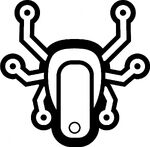
Naabal Badge
Main article: Kiith Naabal
Kiith Naabal, an industrial kiith, was almost unknown in the early history of Kharak - their name only rarely appears in the context of tradesmen or heretics. One possible reason for this is that, for centuries, they were met with hostility by many of the other kiithid, especially Kiith Gaalsien. The Naabal began as refugees fleeing the turmoil of the Heresy Wars. They fled to the northern ice cap of Kharak and formed their capital, Tiir, as a safe haven for all those who wished for peace and safety from the madness of the Siidim and the Gaalsien. Naabal was the first to develop chemical-based explosives and steam power, which they used to intervene in the Heresy Wars and end the conflict, offering peace to all those they liberated. After the Heresy Wars ended, Kiith Naabal returned to their peaceful origins, creating a planetary senate known as the Daiamid at the new capital of Kharak, Tiir, in an effort to end major conflict on the planet.
Kiith Paktu[]
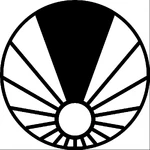
Paktu Badge
Main article: Kiith Paktu
Originally, this kiith was merely a small farming kiith, but they were dispossessed by Kiith Siidim and their new dogma, Siidim cosmology. Paktu was the first of many kiithid to flee across the Great Banded Desert to the unpopulated, temperate south region of known Kharak in an effort to escape the Heresy Wars. Led by a man named Majiir Paktu, they successfully arrived at a sea on the other side of the desert, and much like the Naabal to the north, they made their lands available to all those who were on the run from the theological persecution of the Gaalsien and the Siidim. The Paktu were able to protect their homes from Gaalsien invasion on no less than three occasions, and were among the first to be invited into the Daiamid Council in Tiir.
Kiith Sagald[]
Main article: Kiith Sagaldkiith is known to have been part of the Coalition, as a number of veterans of the Desert Wars bore the Sagald clan name. They were specialist in vehicle manufacture and cultural archeology. Mevath Sagald was responsible for unearthing the Guidestone in 1135 KDS.
Kiith Siidim[]

Main article: Kiith SiidimKiith Siidim was one of the most powerful and religious clans on Kharak, descended from a stranded convoy of traders from Nisilbis. They introduced the worship of the Great Maker Sajuuk to the Kushan and integrated with them. They were also one of the most aggressive and ruthless during the Heresy Wars. Siidim was a constituent of the Coalition. They were able to commission a Coalition carrier, the Sakala. During the Desert Wars, they betrayed the Coalition and sent the Sakala to seize the Khar-Toba for themselves. However, the Coalition carrier Kapisi caught up to and defeated them. The Siidim were expelled from the Daiamid and ostracized for their betrayal, but their martial expertise earned them a small spot on the Mothership project, allowing them to survive the destruction of Kharak. After the Homeworld War, the kiith disbanded and was mostly absorbed by Kiith Somtaaw.
Kiith S'jet[]

S'jet Badge
Main article: Kiith S'jet
In ancient times a group of astronomers, and theorized to be the original astronomers, technicians, and mechanics aboard the Khar-Toba, the S'jet have always been scientific and at the forefront of education, academia and technology. S'jet supercomputers have worked on the problems of the construction of the Mothership, from the Hyperspace Core to the command systems. Their most famous member is Karan S'jet, the woman who became Fleet Command by integrating herself with the very computer minds of the Mothership, and later the Pride of Hiigara and Sajuuk.
Kiith Soban[]
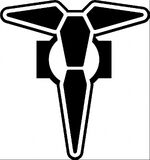
Soban Badge
Main article: Kiith Soban
Kiith Soban is a warrior kiith, composed of the descendants of a small group of families led by a man named Soban the Red, who abandoned their kiith after the Kiith-Sa refused to avenge the assault on their homes by a rival kiith. Tearing the kiith colours from his body, Soban and his followers became mercenaries, being the only kiith to be truly landless. They became excellent warriors, and were known for fighting until the exact second their contract expired, be it a thousand miles from home or in the middle of a battle, and dropping their weapons and immediately going home. Their reputation as fierce warriors has continued to this day, often forming elite combat units.
Kiith Somtaaw[]

Somtaaw Badge
Main article: Kiith SomtaawKiith Somtaaw is a small clan of miners and the main protagonists of Homeworld: Cataclysm. Originally a religious kiith that maintained a pathway of temples called "The Shimmering Path", they were facing hard times when all but two were closed during the Heresy Wars. However, ancient leader Kura Somtaaw miraculously discovered enormous iron ore deposits, turning them into the mining clan they were for thousands of years. They were not the strongest, but they were creative and resourceful, willing to copy, buy or steal whatever technology they could get their hands on to survive. They lost a significant number of members during the Kharakian Genocide, going from 250,000 members to a mere 10,000. Many of the surviving smaller kiithid banded together with Kiith Somtaaw when Kiith Naabal attempted to acquire them, slightly revitalized their numbers to 25,000. This not only voided Naabal's proposal, but also allowed them to build a few ships and continue their mining operations in space. There, they traded with the Bentusi and other kiithid in order to procure supplies and acquire exotic ship designs to protect themselves on their expeditions.
The nature of Kiith Somtaaw was transfigured by the Beast War, which a Somtaaw mining vessel triggered by releasing an extragalactic biomechanical pathogen known as "The Beast". Through many hard-fought battles and sacrifices, they became stronger, rising up to the equal of any true warrior kiith. In the end, Kiith Somtaaw destroyed the Beast once and for all and developed "vaccine" technology to completely eradicate the virus from the galaxy. From then on, Somtaaw became one of the most renowned and honored kiithid on Hiigara, known not just as the miners, but as the "Beast-Slayers".
Other Kiithid[]
Kiith Gaalsien[]
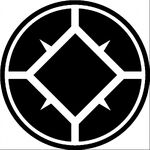
Gaalsien Badge
Main article: Kiith Gaalsien
Kiith Gaalsien is one of the oldest of the kiithid, with some of the oldest relics on Kharak bearing the Kiith's emblem. They are also one of the main religious kiithid (the others being Siidim, Ferriil and Somtaaw). Early in Kharakid history, the Gaalsien were a powerful spiritual and political force. Fanatically religious, the Gaalsien are the remnants of a great holy war between them and Siidim. Gaalsien believed that they were cast down onto Kharak by the gods as punishment, and the Siidim, who believed that they were the chosen people and superior to the other, "native" Kharakians. The ensuing war, known as the Heresy Wars, nearly wiped out both kiithid as well as most of Kharak's infrastructure. Only the intervention of the technophile Kiith Naabal put an end to the Heresy Wars and Gaalsien's time of dominance on Kharak. After the war, the Gaalsien leaders destroyed their holy city of Saju-ka, one of the last vestiges of Gaalsien society. After this atrocity, the Gaalsien became a pariah kiith, and their numbers dwindled. The exiled Gaalsien kiithlings settled into a nomadic existence in the Great Banded Desert, and launched an invasion of the Coalition of Northern Kiithid using salvaged ancient technology when Kiith S'jet led an expedition to reach the wreck of the Khar-Toba deep within their territory. Several acts of sabotage during the Mothership's construction were attributed to Gaalsien (or Gaalsien-inspired) individuals. The ostracised clan was not a sponsor of the Mothership project and attempted to impede it. Officially, no known Gaalsieni were among the Sleepers or fleet crew that survived the Kharakian Genocide. However, it's widely believed there were infiltrators aboard the Mothership and the cryo trays. If true, then the Kiith did ultimately (if barely) survive the unimaginable hailstorm of fire and death that ruined Kharak.
Kiith Atarad[]
One of the few kiithid that resided in the southern pole of Kharak. They were one of the largest after the Paktu.
Kiith Balel[]
Close allies of Kiith Siidim, and enemies of Kiith Lehi. A raid on Lehi territory in 416 KDS sowed the seeds that led to the birth of Kiith Soban.
Kiith Ferriil[]
A lesser religious kiith that were allies of Kiith Siidim during the Heresy Wars. They were absorbed by the Siidim after the disastrous Battle of Danac in 811 KDS, in which the Ferriili army was wiped out by the Naabali forces.
Kiith Hraal/Liir/LiirHra[]

LiirHra Badge
Main article: Kiith LiirHra Originally a manufacturing kiith formed by five smaller Kiithid at the beginning of the Age of Reason, members of Kiith Hraal combined themselves with the aerial-focused Kiith Liir to create Kiith LiirHra, an aerospace technologies manufacturing company. This change came in light shortly before Operation Skaal Brii. After the Homeworld War, the remaining members of Kiith Hraal fully merged with LiirHra.
Kiith Jaraci[]
Main article: Kiith Jaraci Kiith Jaraci is a technical kiith that focused on sensors technology. The satellite technician Leykab Jaraci discovered the Jaraci Object.
Kiith Kaalel[]

Kaalel Badge
Main article: Kiith KaalelKaalel was a significant warrior kiith on Kharak that later specialised in military intelligence. It participated in the Defense of Hiigara against Taiidani loyalists in 15 AHL, and later undertook extragalactic exploration of the Progenitor Great Network during the Age of S'jet.
Kiith Lehi[]
The original kiith of Soban the Red. After their Sa's failed attempt to ally himself to the Siidim when their Balel vassals raided their territories, Soban and most of their members severed their ties to their old kiith and formed Kiith Soban. The kiith survived both the birth of the Soban and the destruction of Kharak.
Kiith Magann[]
Main article: Kiith MagannThis clan is known from one member, Rei Magann, a pioneer of cryogenics.
Kiith Matara[]
Close allies to Kiith Siidim, alongside Kiith Balel and Ferriil.
Kiith Naael[]
One of the few kiithid that resided in the southern pole of Kharak. They were one of the largest after the Paktu.
Kiith Riif[]
Main article: Kiith RiifThe existence of Kiith Riif is only attested to by excerpts from a fleet tactical debate in which the Riif-Sa clashes with a Kiith Paktu admiral over the role of strike craft in a fleet.
Kiith Tambuur[]
Main article: Kiith TambuurOnly two members of this clan survived the Kharakian Genocide, Iifrit and his wife. It reorganised with new members as a warrior kiith after Hiigaran Landfall, particularly specialising in bounty-hunting.
Khaaneph[]
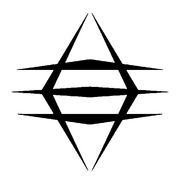
Khaaneph badge.
Main Article: Khaaneph
The Khaaneph were a group of Kushan who renounced all manner of tradition known to the Kushan/Hiigarans, including their belief in Sajuuk and even the kiith social structure itself. Although this group of mysterious raiders and nomads do not believe or follow the traditional kiith structure predominant among the Kushan, they still function as a group that is akin to a kiith.
The Khaaneph lived within the harshest areas of Kharak, and were hostile to all known kiith, especially Kiith Gaalsien. Their primary means of survival include pilaging, looting, and stealing from the kiiths of Kharak, specifically from the sparsely-populated settlements of the Kharakian desert. This also was their way growing in number; they often kidnapped the residents of these settlements and press them into the Khaaneph fold, even taking the young of other kiiths to do so.
It is presumed that none of them survived the Kharakian Genocide.
Sources[]
- ↑ The words kiith/kiithid/kiithling are commonly found both capitalised and uncapitalised. Uncapitalised is the preferred use, as demonstrated in the Homeworld, Homeworld: Cataclysm, Homeworld 2 manuals and the Homeworld: Deserts of Kharak expedition guide. However, some official sources have used the capitalised form. When used as part of a proper noun, e.g. Kiith Soban, kiith must be capitalised.
